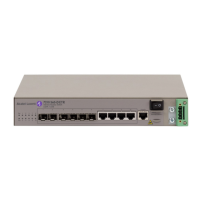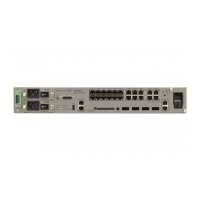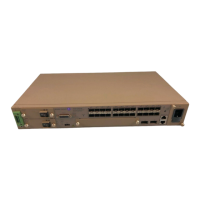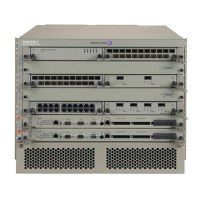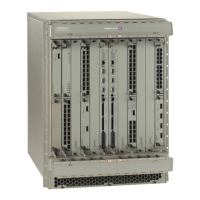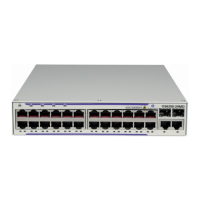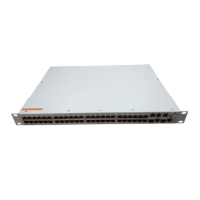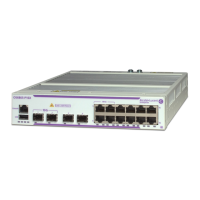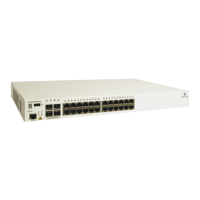Label Distribution Protocol
Page 220 7210 SAS M, T, X, R6, Mxp MPLS Configu-
ration Guide
Label Distribution Protocol
Label Distribution Protocol (LDP) is a protocol used to distribute labels in non-traffic-engineered
applications. LDP allows routers to establish label switched paths (LSPs) through a network by
mapping network-layer routing information directly to data link layer-switched paths.
An LSP is defined by the set of labels from the ingress Label Switching Router (LSR) to the egress
LSR. LDP associates a Forwarding Equivalence Class (FEC) with each LSP it creates. A FEC is a
collection of common actions associated with a class of packets. When an LSR assigns a label to a
FEC, it must let other LSRs in the path know about the label. LDP helps to establish the LSP by
providing a set of procedures that LSRs can use to distribute labels.
The FEC associated with an LSP specifies which packets are mapped to that LSP. LSPs are
extended through a network as each LSR splices incoming labels for a FEC to the outgoing label
assigned to the next hop for the given FEC.
LDP allows an LSR to request a label from a downstream LSR so it can bind the label to a specific
FEC. The downstream LSR responds to the request from the upstream LSR by sending the
requested label.
LSRs can distribute a FEC label binding in response to an explicit request from another LSR. This
is known as Downstream On Demand (DOD) label distribution. LSRs can also distribute label
bindings to LSRs that have not explicitly requested them. This is called Downstream Unsolicited
(DUS).
LDP and MPLS
LDP performs the label distribution only in MPLS environments. The LDP operation begins with
a hello discovery process to find LDP peers in the network. LDP peers are two LSRs that use LDP
to exchange label/FEC mapping information. An LDP session is created between LDP peers. A
single LDP session allows each peer to learn the other's label mappings (LDP is bi-directional) and
to exchange label binding information.
LDP signaling works with the MPLS label manager to manage the relationships between labels
and the corresponding FEC. For service-based FECs, LDP works in tandem with the Service
Manager to identify the virtual leased lines (VLLs) and Virtual Private LAN Services (VPLSs) to
signal.
An MPLS label identifies a set of actions that the forwarding plane performs on an incoming
packet before discarding it. The FEC is identified through the signaling protocol (in this case,
LDP) and allocated a label. The mapping between the label and the FEC is communicated to the
forwarding plane. In order for this processing on the packet to occur at high speeds, optimized
tables are maintained in the forwarding plane that enable fast access and packet identification.
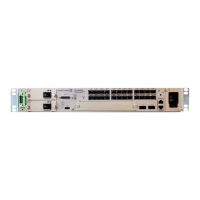
